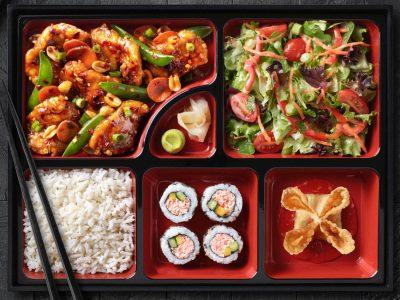Maybe you’ve seen them in a Studio Ghibli movie, or maybe you’ve seen them in a TikTok tutorial. What is there to learn from bento boxes that are suddenly popping up in Western culture?
To put it simply, they’re Tupperware-like containers Japanese people use to pack lunches such as rice, egg, fish or meats. They go back to the 11th century but have lasted the test of time with modern iterations.

Bento boxes are a symbol of love. Whether from a parent, significant other or yourself, an aisai bento box is a testament to the time and effort someone has put into your meal. They’ve even become an outlet for other emotions — a shikaeshi is a “revenge” bento made by an angry wife, usually filled with inedible, raw food or insults written in seaweed.
But hypothetically, if you don’t make the cook angry, every meal is made with love. So next time my roommate makes me dinner or I’m making my own food, I won’t forget the sentiment left by Japanese culture. I am loved.
Bento boxes have an entirely different approach to nutrition in comparison to Western norms. Rather than using food groups, nutrition is based on colors. Food bloggers recommend adding up to six colors in the meal for the healthiest, most aesthetic bento.
To back this up, Japanese cuisine happens to be fairly healthy due to its reliance on fish, minimally processed foods and little amounts of added sugar. Whether it’s because of the colors added to each meal, I don’t know. But I love the concept of keeping an open mind — instead of thinking about the “My Food Plate” poster in my elementary school as the picture of health, maybe I’ll consider colors instead.
Through bento, I have also learned to pack efficiently. Not only are the traditions of the meal convenient in time and space, but they involve very little waste.
The popularity of bento boxes can partly be attributed to their convenience. Their function is specifically so the entire meal can fit in the small box. Instead of using a separate bag, they’re traditionally wrapped in a fabric called furoshiki, with a built-in handle. Furthermore, the bento must be packed to the brim to ensure that nothing will spill out.
In case anyone was wondering, my favorite bento item is onigiri, a holdable ball of leftover rice.
Arguably most importantly, bento boxes have taught me to fall in love with making food.
Living in a city that isn’t my home, I take every opportunity to make life more comforting to me. While watching the bento box YouTube videos that come up on my feed, I can almost smell the aroma of pork katsu being fried on a 6 a.m. school day.
There is much to enjoy by taking the time to make a beautiful meal fit into a portable box.
Bento boxes inspire me to eat healthier, eat on a budget and create small little joys for myself. I have learned much from tuning into this small part of Japanese culture.














